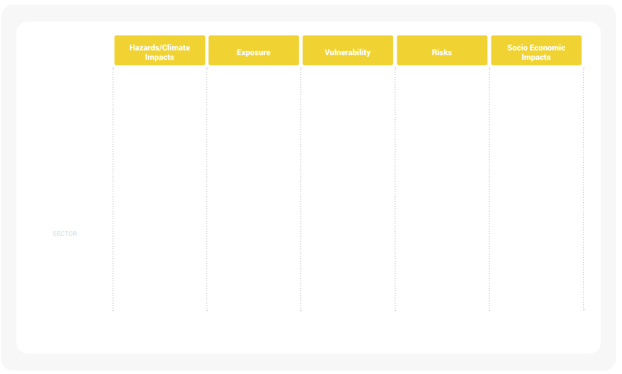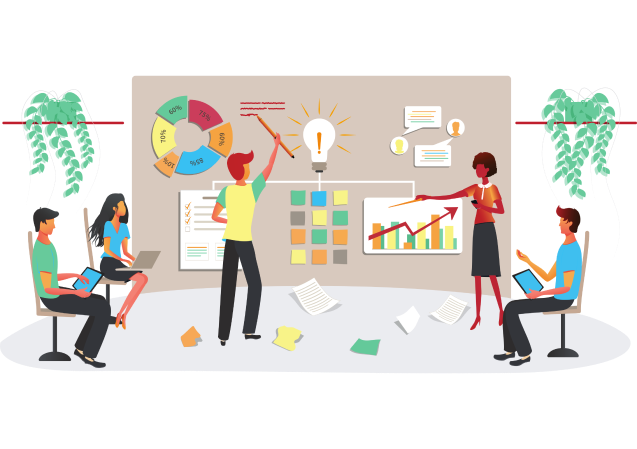
SESSION I
Climate perception, Challenges & Existing solutions
Download playbook
In this first session you will work together with local stakeholders to get a better understanding of the climate challenges and risks, the challenges of the different participants from the region and some existing solutions.
Objectives
- Identify the climate challenges and risks in terms of hazards, exposure, vulnerability, risk and socio-economic impact.
- Get to know the different participants of the region and their respective challenges.
- The results of the first session will serve as input for the second session, where a scientific layer will be added.
- Map existing solutions to the hazards identified, as well as promising solutions that could be investigated.
Guidelines
- As this will be the first group interaction with the local stakeholders, it can be interesting to offer them a recap of the TransformAr project.
- Provide an overview of the 3 program sessions to be planned, as well as a brief description of each. This will help them understand the purpose of some of the exercises.
- Allow everyone to introduce themselves (body they represent, function,...).
- Consider using a poll or other questionnaire tool to jump-start the conversation. Some examples of these tools are Mentimeter and Kahoot.
- Make sure to guide them during the canvas exercises, correcting course when they go off topic.
Proposed agenda

How to start your workshop?
It is important to share some general insights with the participants on climate change before beginning the session. The session moderators have to incite participants to share their knowledge on the impacts of climate change, but this sometimes necessitates a general introduction as to what climate change is and an explanation of the general trends.
Remember, the stakeholders know their territory and region best, but this does not mean that the organizer should not prepare for the sessions with some general information related to the territory, its various economic sectors, its geography, etc. This will also help the organizer course-correct the discussion when the participants might be “derailing” off topic
In order to run a smooth session, it is important to engage your participants. You can do this by starting with an icebreaker. This may seem silly, but it can really work to build trust amongst the participants. You can also start with a meet and greet where you allow each participant to introduce themselves, their company, function, as well as ask them to describe their particular sector in one word. Other activities that might help to engage the participants is by using dilemma questions and asking motivational questions like "What is the motivation to join these sessions?”.
Fill in the main canvas with the participants
For each Key Community System a sector-specific session will be organized. The objective is to identify the climate-related risks faced by a given sector. At the end of the exercise the participants will select a most prominent risk which they would like to see addressed by developing adaptation pathways.
The first session is made up of 2 parts: Risk factors and challenges. For the risk factors you will have to fill in 3 parts: the hazards, exposure and vulnerability. The hazards refer to physical events or their physical impacts. In the field of exposure, you will fill in what the nature of exposure is (what is exposed?) as well as the level of exposure. For the vulnerability you need to understand the sensitivity of exposed elements/subjects as well as their adaptive capacity. What is the difference? Sensitivity considers the characteristic making a group or a structure vulnerable while the adaptive capacity indicates the efforts taken/or not to limit vulnerability and increase resilience.
The second part, challenges, consists of 4 fields: intermediate impact, perceived risks, socia/economic impact and existing solutions. Intermediate impacts determine how exposure and vulnerability come into play with climate hazards. The impact would vary in function of the vulnerability of exposed elements. For the second field, you will determine what risks are associated with the hazards and impacts. In the third field, you will fill in how this will impact economic indicators on demand and supply side. For the last field, you will search for existing solutions and which promising solutions could be envisaged for the future? Solutions can be classified in different ways, e.g., Technical, NatureBased, Policy-Driven, etc.
You can find an example for this session in the playbook.
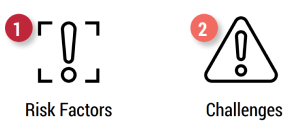
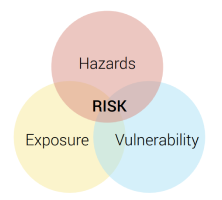
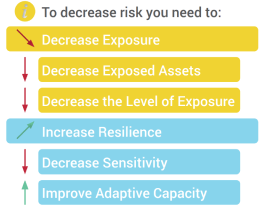
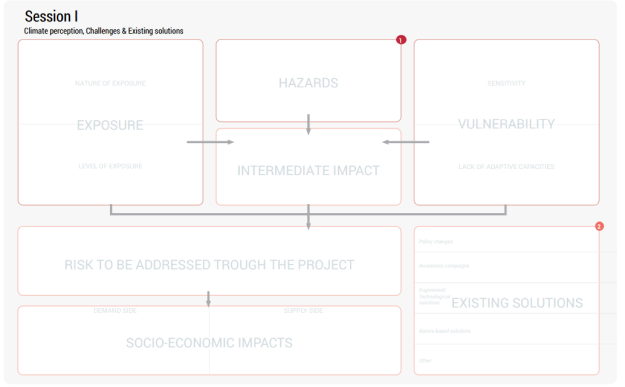
Fill in the conclusion canvas
After session I is finalised the organiser can create a conclusion canvas that summarises all risk components per sector. This will also serve as useful input for the following session.
You can find an example in the playbook.
